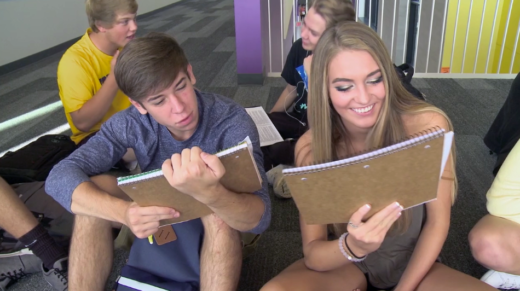High school English teacher Sarah Brown Wessling admits that she used to think about the first day of school as the time to lay out class rules and expectations. But after years of teaching, she has come to a different understanding about the best way to use this crucial time.
"Over time, I've realized I want them to walk away with an experience where they understand what learning is going to feel like in this space together," Wessling said in a Teaching Channel video. "So I've given myself this challenge to teach on the first day."
She gives students three clues and asks them to tell her what the class is going to be all about. During the class period, students share ideas with one another in pairs, but also to the whole group. Wessling takes them through Plato's "Allegory of the Cave," reading it out loud to them because she knows tone and inflection make a difference for comprehension with text this difficult. As they slowly move through the text, she models some of the habits of good readers.
"Plato is perfect for complex work, but I also know if I were to say go read this tough essay on your own and then tell me what it's all about, that it would be counterproductive," Wessling said. "It really has to be a community effort because that's part of what I want them to understand about who we're going to be as learners."
Wessling has learned that starting with real learning on the first day, does a lot more to set the tone for the year than a laundry list of rules. She's demonstrating right away what it looks like to be part of a community of learners.


